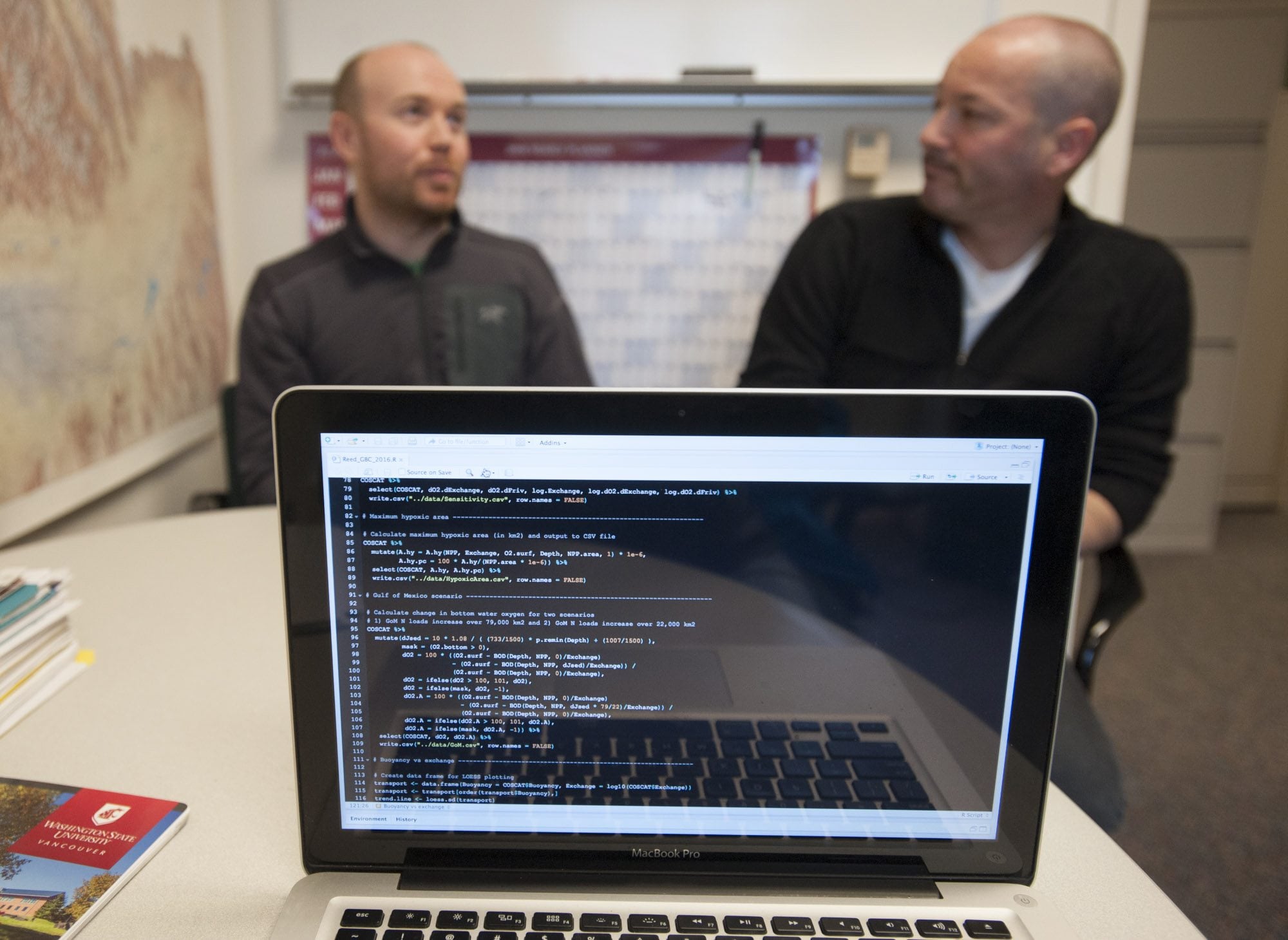Coastal dead zones are about as hospitable to marine life as their name implies. Although they are a persistent and growing problem around the globe, scientists couldn’t predict where they would develop until two Washington State University Vancouver scientists stepped in.
Daniel Reed, a research associate, and John Harrison, an associate professor in the School of the Environment, developed a model they call the Coastal Ocean Oxygen Linked to Benthic Exchange and Nutrient Supply. It’s used to predict where dead zones (low oxygen zones) will form in coastal waters around the world based how on population growth and agriculture and fossil fuel consumption will deliver large quantities of nutrients to the ocean.
“Nobody had made the quantitative link at the global scale between nutrient delivery to the coast and coastal (dead zones) until now,” Harrison said. “This is the result of years of work.”
More than 400 low-oxygen zones have been found throughout the world, some along the Oregon and Washington coastlines.
They form when agriculture, wastewater treatment facilities and other sources wash nutrients like nitrogen and phosphorus into the sea. That causes a rapid growth in phytoplankton populations. When those organisms die, they sink to the ocean floor and decompose. Their decomposition consumes oxygen faster than ocean can cycle in new water to counterbalance the process.
“Where it’s surprising in our model is how far nitrogen has to travel — sometimes it’s thousands of miles,” Harrison said.
When a dead zone forms, fish and marine mammals can swim away from the area, but bivalves like clams and oysters are trapped, and whole communities of them can die.
Reed and Harrison’s model works with data already gathered on rates of coastal oxygen consumption to nutrient inputs from land.
“Many of the individual pieces of this puzzle were out there, and we pulled them together to make something new,” Harrison said.
They also discovered some parts of the world’s oceans are more sensitive to human activity than others because of ocean currents and existing water conditions. The Oregon and Washington coasts, for example, are more sensitive to nutrient delivery than the Gulf of Mexico.
Harrison said currents on the Oregon and Washington coasts mix oxygen-rich surface waters at a slower pace than many areas in the world, thus making them more sensitive to additional nutrients from land.
“In fact, pound for pound, our model suggests that oxygen levels in our coastal waters are more sensitive to additional nutrient inputs from land than the famous low-oxygen zone in the Gulf of Mexico,” Harrison said.
Their model also predicted coast seas in areas with exploding populations like Southeast Asia and the Bay of Bengal are likely to see dead zones form now or in the near future.
The scientists plan to examine how climate change will affect oceanic oxygen levels relative to land-sourced nutrients.
“A warm ocean means less oxygen, Reed said. “So we’ll look at that in the future.”
In order to get the model in the hands of more scientists and natural resource managers working to maintain coast water ecosystems, Reed and Harrison made their model available as a free download at: https://github.com/DanielReedOcean/COOLBEANS




